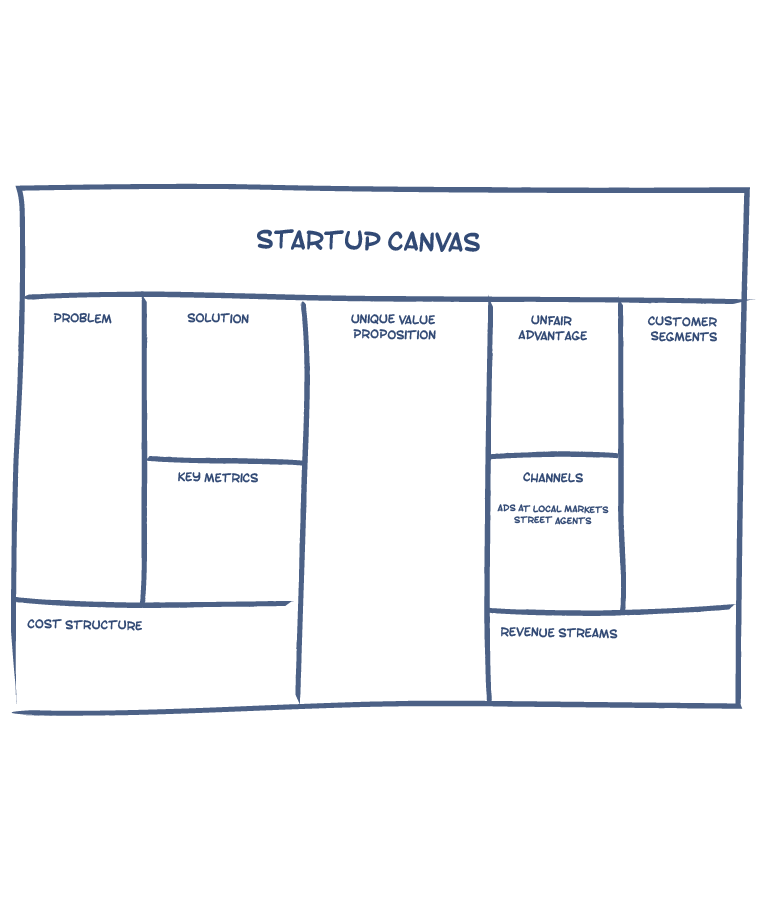The Startup Canvas summarises the most important elements of an organisation's business model, and is especially useful for early stage startups to think through the different elements. The version of the canvas being used here is inspired by the Lean methodology version of the Business Model Canvas (BMC).
USE CASES
- Investigate and map how ideas or solutions could be transformed into a holistic business model.
- Map current business models, identify gaps and opportunities (priorities), and outline interdependencies.
- Use the canvas as a dashboard to document each stage of evolution of the business model, and reflect on investments and results.
LIMITATIONS
The Startup Canvas tool is not a problem solving tool as such. It has limited capacity to answer what the ‘right’ model for a business is. It is best used as an evolving summary or dashboard.

